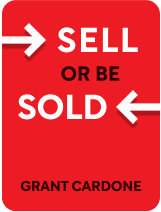

This article is an excerpt from the Shortform book guide to "Sell or Be Sold" by Grant Cardone. Shortform has the world's best summaries and analyses of books you should be reading.
Like this article? Sign up for a free trial here .
What is the 5-step sales process? Who should adopt Grant Cardone’s 5 step process?
The 5-step sales process is Grant Cardone’s sales formula for figuring out customer needs and presenting a product in a way that will convince the customer to make the purchase. You will need Cardone’s formula if your existing sales process is dysfunctional or you simply want to try something new.
Read on to discover Grant Cardone’s 5-step sales process.
Universal 5-Step Sales Process
If you find that your existing sales process is too convoluted to improve, or you just want to try something new, you can experiment with Cardone’s 5-step sales process. You’ll have to customize or tweak this process for your product, but the basic structure of the 5-step sales process will work in any industry.
1. Greet the customer. This is a short step that involves exchanging names, making a quick, good first impression (rapport comes later), and making the customer feel comfortable. Approach the customer, smile, thank them for seeing you, and shake her hand (making physical contract breaks the ice). Then, ask her what information she’d like.
2. Figure out what the customer wants and needs. Do this by asking questions about previous things she’s bought, her motivations, what problems she’s trying to solve, and so on. This step isn’t about selling—it’s about information-gathering. The goal is to find out which product to show the customer and which features to highlight.
- For example, if a customer wants a glass of water, is it to make her place settings look pretty, because she’s thirsty, or to flush an irritant from her eye?
3. Present a product. Instead of letting a potential customer choose her product, pick something for her that will meet the wants and needs you determined in step 2. Don’t present all the benefits of a product—highlight the specific features that she’ll be most interested in to save both of you time. This step is about making the customer want the product, heightening its value, and creating urgency.
- For example, if the customer who wanted a glass of water wanted it to set her table, she’s more interested in the aesthetics of the glass than the water inside it.
4. Make an offer. First, ask everyone to sit down. (When you’re standing up, it’s too easy to rely on talking and pitching, which, as we learned, isn’t as credible as showing). Then, show your customer documentation and figures even if she’s not ready to see them. (She needs this information before she can think about making a purchase.) Finally, don’t ask her if she wants to buy—this would give her the opportunity to say no. Instead, ask her to sign the offer or to follow you to the next step.
5. Close. Closing is getting the customer to hand over her money, sign a contract, or otherwise commit to the sale. It involves handling stalls and objections, and it’s the hardest part of the sales process. (For more detailed instructions on closing, Cardone recommends reading his book The Closer’s Survival Guide to better understand the 5-step sales process.

———End of Preview———
Like what you just read? Read the rest of the world's best book summary and analysis of Grant Cardone's "Sell or Be Sold" at Shortform .
Here's what you'll find in our full Sell or Be Sold summary :
- How your happiness and even survival depend on your selling ability
- The five steps to becoming a master salesperson
- Step-by-plans to lead the customer to make a purchase





